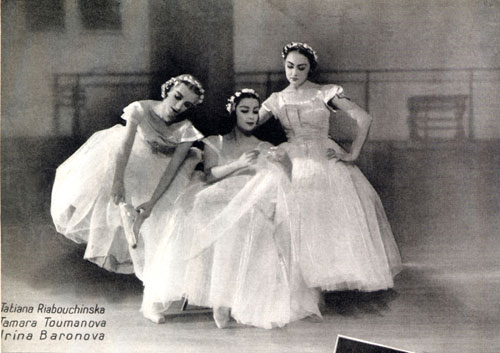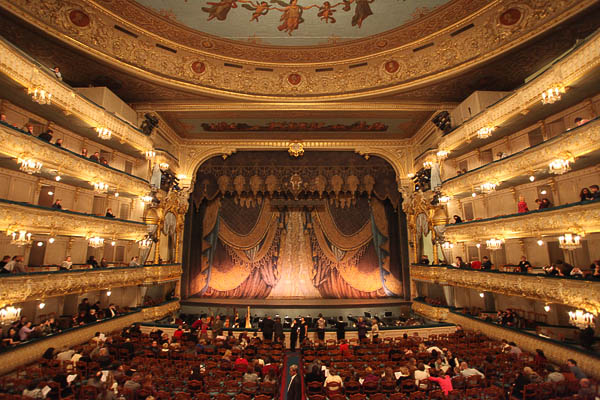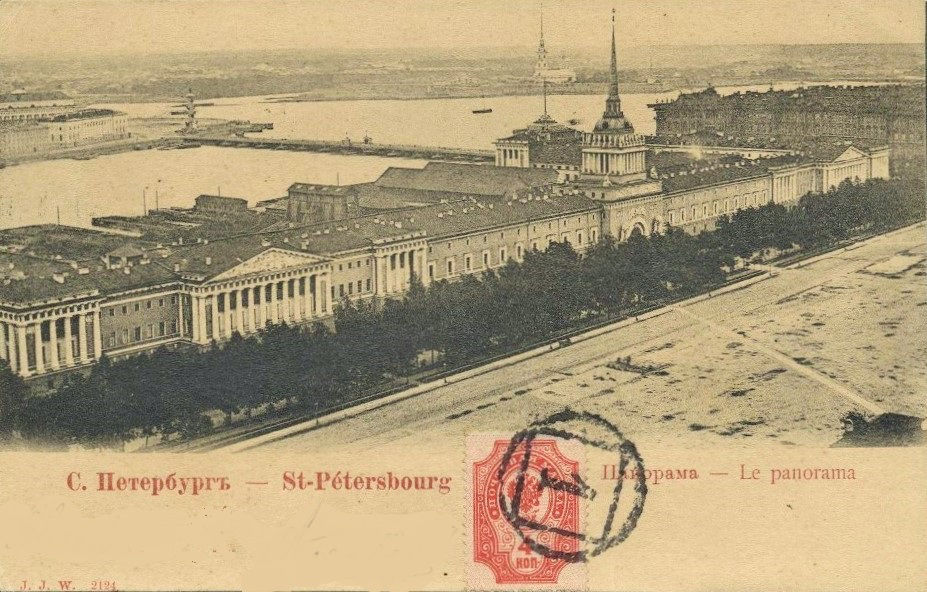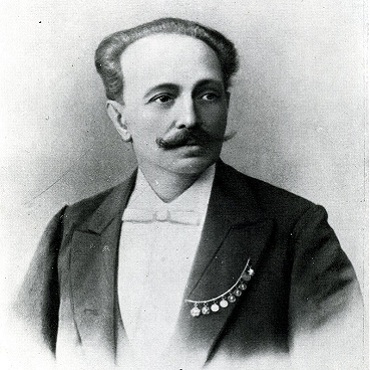Friday, December 11, 2015
1. Pas de deux: Harlequinade
This is a pas de deux from the ballet Harlequinade, choreographed by my mentor Marius Petipa. I have performed this myself in the Mariinsky Theater in the year 1900. It is one of my favorite ballets to perform because of it's use of slower, more simple music. The music allows for elegance, expressiveness, and purity of movement and technique, which are all characteristics that both my dancing and teaching is known for. My performance of Harlequinade was amoung my first performances as principle dancer of the Imperial Russian Ballet and is very special to me.
Video:
Web. 11 Dec. 2015. <http://www.balletandopera.com/photos_info/perfomance/mar_ex_vaganov/akad_vaganova.jpg>
2. Paris in 1900
This, of course, is Paris, France in the year 1900. This is what Paris looked like when I emigrated in 1923. This is the last place I settled for the rest of my days. Before settling here, I taught for two years in London, Milan, Buenos Aires and Berlin after I left St. Petersburg in 1921. I settled in Paris because of it's many opportunities for me to teach promising young students. Also, Paris had a very large white emigree community- Russian men, women and children like me that had either left or been exiled from Russia during the Russian Revolution.
Picture:
Web. 11 Dec. 2015. <http://www.balletandopera.com/photos_info/perfomance/mar_ex_vaganov/akad_vaganova.jpg>.
Picture:
Web. 11 Dec. 2015. <http://www.balletandopera.com/photos_info/perfomance/mar_ex_vaganov/akad_vaganova.jpg>.
3. The "Baby Balllerinas"
These are three of my pupils Tatiana Riabouchinska, Tamara Toumanova, and Irina Baronova. The trio was also nicknamed the "baby ballerinas" by master choreographer George Balanchine. Balanchine first discovered Irina while I was teaching her in Paris when she was 12, and later made her and the two others principle dancers in his company. I passed down my Preobrajenska method that emphasizes musicality down to all of my students including these girls. This is an example of how I was a great teacher as well as a great dancer.
Picture:
Web. 11 Dec. 2015. <http://www.balletandopera.com/photos_info/perfomance/mar_ex_vaganov/akad_vaganova.jpg>.
Picture:
Web. 11 Dec. 2015. <http://www.balletandopera.com/photos_info/perfomance/mar_ex_vaganov/akad_vaganova.jpg>.
4. Imperial Russian Ballet School classroom
These are a few students at the barre in a classroom of the Imperial Russian Ballet School. The school was established in 1738, and was renamed "The Vagonova Academy of Russian Ballet" after the Russian Revolution, which was also the time when I left Russia. The movement you see the students executing in the picture, battement derriere, is an exercise I would've been doing everyday at the barre in that classroom, or one like it, everyday until I graduated from the school. My mom tried numerous times to get me into a classroom like this. After countless rejections because of my frailness and crooked spine, I finally got into the school, and trained almost every day until I graduated and got accepted into the Imperial Russian Ballet company
Picture:
Web. 11 Dec. 2015. <http://www.balletandopera.com/photos_info/perfomance/mar_ex_vaganov/akad_vaganova.jpg>.
Picture:
Web. 11 Dec. 2015. <http://www.balletandopera.com/photos_info/perfomance/mar_ex_vaganov/akad_vaganova.jpg>.
5. The Mariinsky Theater
This is the Mariinsky Theater in my home city of St. Petersburg, Russia. This picure barley does it justice, for the stage was a beautifully big behemoth in it's own right, and housed and audience of twice that size. It was opened in 1860, however, my debut in the theater was in 1892, dancing Kalkabrino, one of Petipa's lesser known works. I will never forget the joy of being promoted to principle dancer in 1900 and performing solos alone on the huge stage for the audience to see. The copious amounts of audience adoration was nothing to spit at either. Being critically acclaimed for my unseen before pure technique always felt rewarding.
Picture:
"Calvano,Pietro - Vastesi in the World." Vastesi in the World. Web. 11 Dec. 2015. <http://vastesiworld.org/listing/1878/>
Picture:
"Calvano,Pietro - Vastesi in the World." Vastesi in the World. Web. 11 Dec. 2015. <http://vastesiworld.org/listing/1878/>
6. Teatro Alla Scala
This, my friends, is the Teatro Alla Scala. This is the view that I had from the stage when I was dancing while on tour with The Imperial Ballet Company in Milan. I was so excited to perform on a stage where so many other esteemed dancers, actresses and singers had graced the stage under my feet. It was also amazing being in Milan, with the beautiful Milan Cathedral and the Galleria of Vittorio Emanuele II being within walking distance from the theater. Performing on this stage was definitely a highlight of my career as a dancer.
Photo:
"Calvano,Pietro - Vastesi in the World." Vastesi in the World. Web. 11 Dec. 2015. <http://vastesiworld.org/listing/1878/>.
7. St. Petersburg, Russia
Here is a panorama of my hometown of St. Petersburg, Russia. It was home to me, and my mother and father as I grew up. St. Petersburg also housed the Mariinsky Theater along with the Imperial Russian Ballet company where I spent so many of my years learning and dancing. Had I not been born in the wonderful capital of Russia, and arguably the capital of ballet, I would not have had the opportunities provided to me to learn how to dance as I did. Although it was my hometown, I left to teach all over the world in 1920 when the Russian Revolution sprang up.
Picture:
"Calvano,Pietro - Vastesi in the World." Vastesi in the World. Web. 11 Dec. 2015. <http://vastesiworld.org/listing/1878/>.
8. Marius Petipa
This is my mentor, Marius Ivanovich Petipa. He is by far the most momentous factor in my success as a dancer. Under his supervision in the Imperial Ballet company, I reached new heights (and I'm not just reffering to how high my legs and jumps went). He was and is still considered to be one of the best and most influential choreographers in ballet history. Choreographing ballets such as Don Quixote, Harlequinade and many more, many of which I was in. Although the man was often hard to deal with, and spoke very little Russian, being from Marseilles in France, I would've never gotten to be the great dancer and teacher I was.
Picture:
"Don Quixote." Teatr Wielki Opera Narodowa. Web. 11 Dec. 2015. <http://teatrwielki.pl/en/repertoire/calendar/2014-2015/don-quixote/>.
Thursday, December 10, 2015
9. Esmerelda Variation
This is Esmerelda variation from the ballet "La Esmerelda", choreographed by one of my greatest mentors, Marius Petipa. Although this is not performed by me, I have performed this in my lifetime. This is by far one of the hardest dances I have ever performed because of it's demanding use of flexibility, turns and stamina. This also posed a greater challenge to me because of it's sharp-accented movement which opposes my natural fluidity and lyricality. This is an example of a role I performed that was very out of my element.
Video:
Fogarty, Miko. "Miko Fogarty, 16, Moscow IBC 2013 Gold Medalist Final Round - Esmeralda -." YouTube. YouTube, 24 June 2013. Web. 11 Dec. 2015. <http://www.youtube.com/watch?v=50lAMbJUXfc>.
10. Olga Preobrajenska teaching in Paris
Here you can see how I spent the last of my days. Here I was, in my ripe young age of 83, teaching at a small studio in Paris. You can see me greeting one of my dearest, and most esteemed young pupils out of the many that I have taught. Ludmilla Tcherina was one of the most famous actresses in her day in Paris, as well as being the youngest girl ever to be offered a principle position in the Ballet Russe de Monte Carlo. And where did all that young talent begin? In my classroom.
The year was 1959 when this video was taken, and I still demonstrated combinations to the best of my ability. as I still loved dancing, and wished to pass down my lyrical technique to the next generation of dancers.
Video:
Pathe, British. "83 Year Old Ballet Teacher (1959)." YouTube. YouTube, 13 Apr. 2014. Web. 11 Dec. 2015. <http://www.youtube.com/watch?v=JDgEB5iK-9o>.
Subscribe to:
Comments (Atom)






